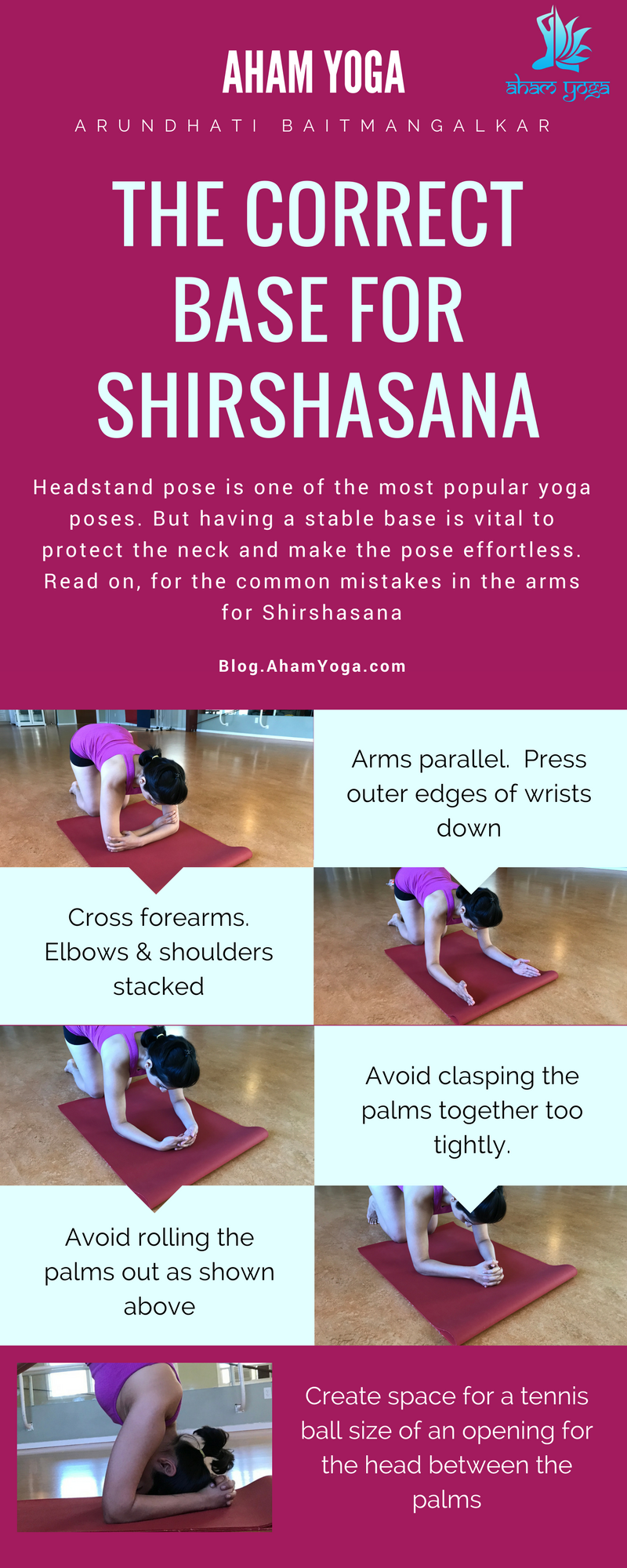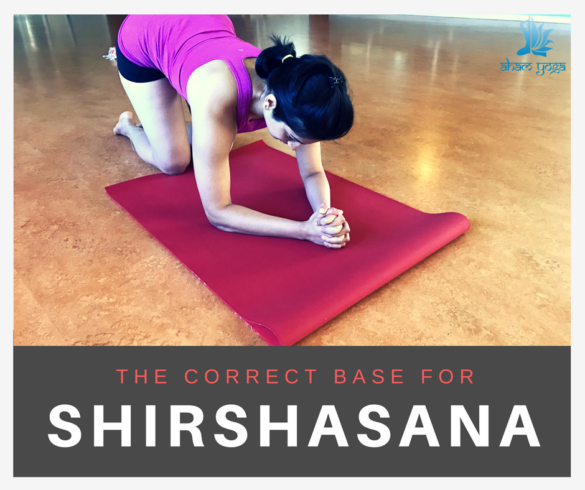I was very new to yoga practice and had already signed up for my first yoga teacher training when I lived in India. During my first yoga teacher training I was introduced to Shirshasana. Also known as headstand pose or head balance. I barely had developed any body awareness then, so I used to very sloppily kick up my legs and down. I do not even remember if I really got up. Soon after, I started my second yoga teacher training (yes, I have done several during my early teaching years) my yoga teacher insisted that we do not use a wall no matter what. And in all the 16 yoga teacher trainees there. I was the only one who could not go upside down. I used to struggle and try to lift my feet up into ardha shirsshasana or half headstand. But I did this with NO sense of alignment and overloaded my shoulders immensely. I just needed to get up at that point, I did not really care how.
So needless to say, I developed a love-hate relationship with all inversions. I used to think about shirshasana during other poses especially as we got to the inversions section of the class. Then, once over, I would be relieved. And it would happen all over again the next day. This went on and on for a long time.
About a year later, I found myself in front of an Iyengar yoga teacher. If you are familiar with the Iyengar Yoga method. They are known for precision in alignment, great sequencing and developing the systematic ability to hold yoga poses for an extended duration of time. She noticed how I was crooked in my headstand and asked me to take it back to the wall. My ego was bruised but this did me a ton of good. In the months that followed, I ended up re-learning my shirshasana. And today I have really worked on getting my headstand right.
For my yoga practice, the base for shirshasana is extremely important. The more time I spend focusing on setting my base right, the more stable I get and the longer I last in my headstand. So here’s what it takes.
Common mistakes in base position for Shirshasana
- Elbows wider than shoulders. This causes the shoulders to drop
- Palms clasped too tightly or loosely
- Wrist and forearm rolling in or out
- Outer wrist lifts off the mat
- Tensing the shoulders
- Not engaging the arms enough
The correct base for Shirshasana 101

The correct base for shirshasana
Remember to …
- Cross forearms to get the correct width of elbows.
- Press outer wrist and center of forearms into the mat
- Engage upper arms. Draw shoulders away from the floor
- Maintain an opening between the palms for the head to fit in
- When the head touches, shoulders broaden
- Use arms powerfully to protect neck
A word of caution…
- Practice under the guidance of a professional yoga teacher
- Do not attempt shirshasana if you are a beginner
- A pose like this takes patience and practice. Be good to yourself
- Do not allow for any compression in the neck
But know that there is a LOT more to Shirshasana that is not covered in this blog post. This post specifically addresses only the base of shirshasana. Practice safe and well. Afterall it is called “king” of all yoga poses for a reason.

